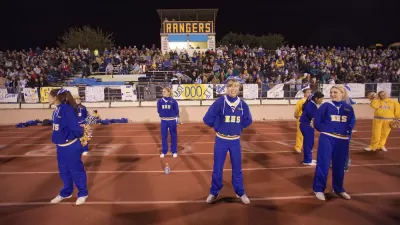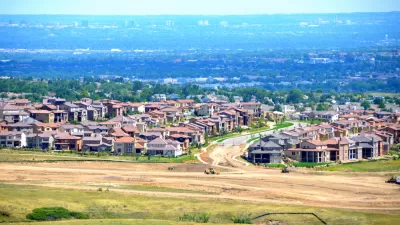The idea that half the world's population has moved to cities, with more coming soon, misses a fundamental fact about cities: many of them are actually suburbs.

An article by Courtney Humphries debunks the commonly cited statistic that half the world's population is living in cities. Karen Seto, a geographer at Yale University, is quoted directly to describe the lost nuance of that claim: "We don’t have 50 percent of the world living in cities….A lot of these people are living in towns and small centers." Or, as Humphries adds, "a far cry from Dubai."
Humphries credits the misconception to a 2007 report by the United Nations as well as the May special issue of the journal Science. An article also from May, by Randy Rieland, made a similar claim about the U.N. report in support of a different argument about the future potential of suburbs.
The problem under examination here: since the U.N. report, many people have been too quick to jump to conclusions about the definitions of "urban" and "city," when in fact many countries define those terms differently and in every country they mean more than one type of place. Humphries follows through to the consequences of the misconception:
Swapping one term for another seems like a harmless convenience. But it directs the attention on urbanization toward big cities — which are iconic and visible places — and away from less exciting areas, such as vast tracts of houses on the fringe of cities, or smaller but increasingly people-packed townships.
Not only does a too-narrow definition erase the many worthy people and causes that live and work in suburbs and small towns, a too-narrow definition also erases the negative externalities of suburban development patterns. Humphries describes that latter consequence as "[missing] the realities of where we live and how our sprawling ways are changing the world."
FULL STORY: Cities Are Not as Big a Deal as You Think

Planetizen Federal Action Tracker
A weekly monitor of how Trump’s orders and actions are impacting planners and planning in America.

Congressman Proposes Bill to Rename DC Metro “Trump Train”
The Make Autorail Great Again Act would withhold federal funding to the system until the Washington Metropolitan Area Transit Authority (WMATA), rebrands as the Washington Metropolitan Authority for Greater Access (WMAGA).

DARTSpace Platform Streamlines Dallas TOD Application Process
The Dallas transit agency hopes a shorter permitting timeline will boost transit-oriented development around rail stations.

Car-Centric LA Suburb Looks to a Train-Oriented Future
City leaders in Rancho Cucamonga, the future western terminus of the Brightline West rail line to Las Vegas, want to reimagine the city as a transit-oriented, pedestrian-friendly community.

New Alaska Bitcoin Mine Would Burn as Much Energy as the State’s Largest Coal Plant
Fueled by “stranded” natural gas, the startup hopes to become the largest in the US, and to make Alaska an industry center.

New Jersey Duplexes Elicit Mixed Reactions
Modern, two-unit residences are proliferating in northern New Jersey communities, signaling for some a boon to the housing supply and to others a loss of historic architecture.
Urban Design for Planners 1: Software Tools
This six-course series explores essential urban design concepts using open source software and equips planners with the tools they need to participate fully in the urban design process.
Planning for Universal Design
Learn the tools for implementing Universal Design in planning regulations.
Municipality of Princeton
Roanoke Valley-Alleghany Regional Commission
City of Mt Shasta
City of Camden Redevelopment Agency
City of Astoria
Transportation Research & Education Center (TREC) at Portland State University
US High Speed Rail Association
City of Camden Redevelopment Agency
Municipality of Princeton (NJ)





























